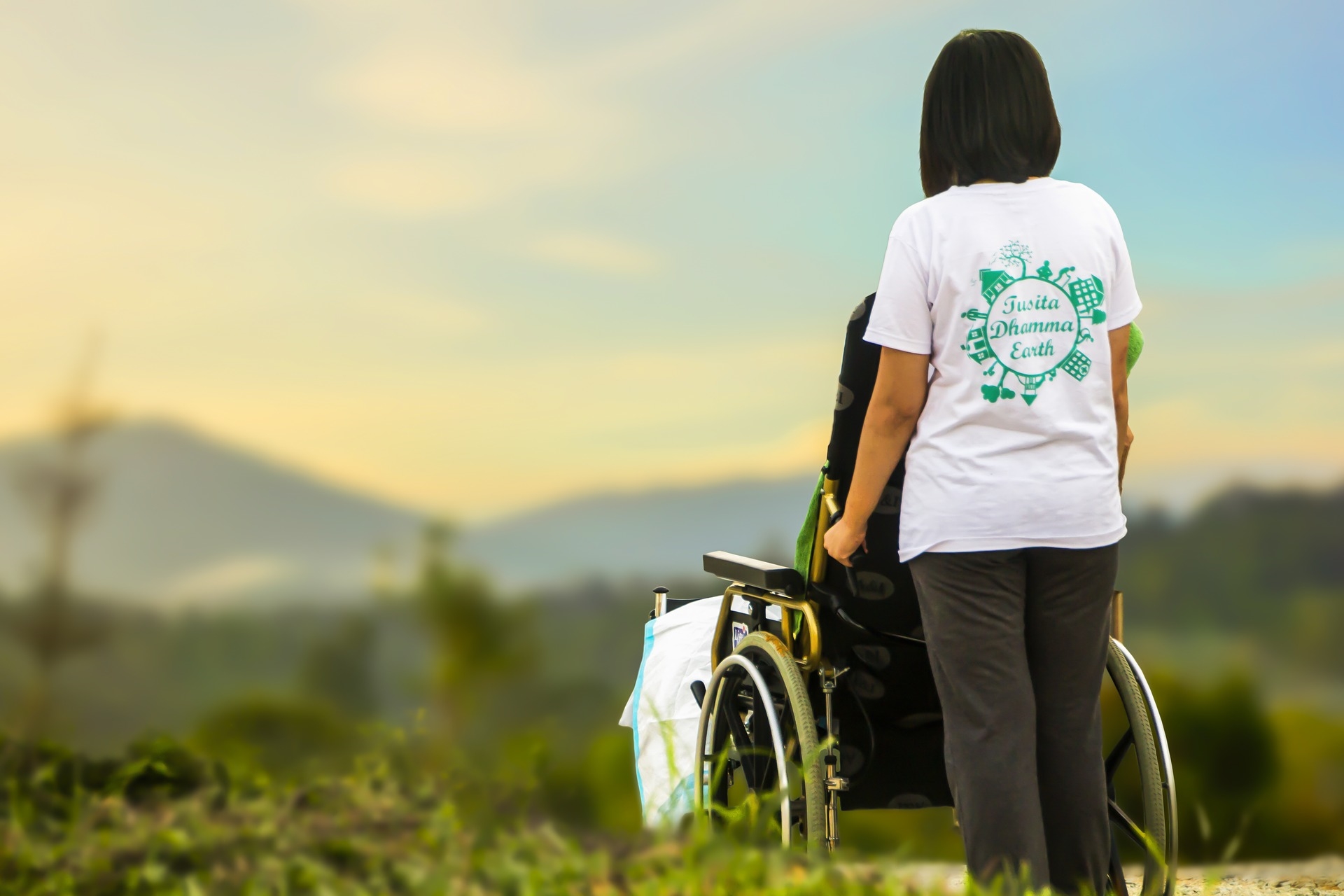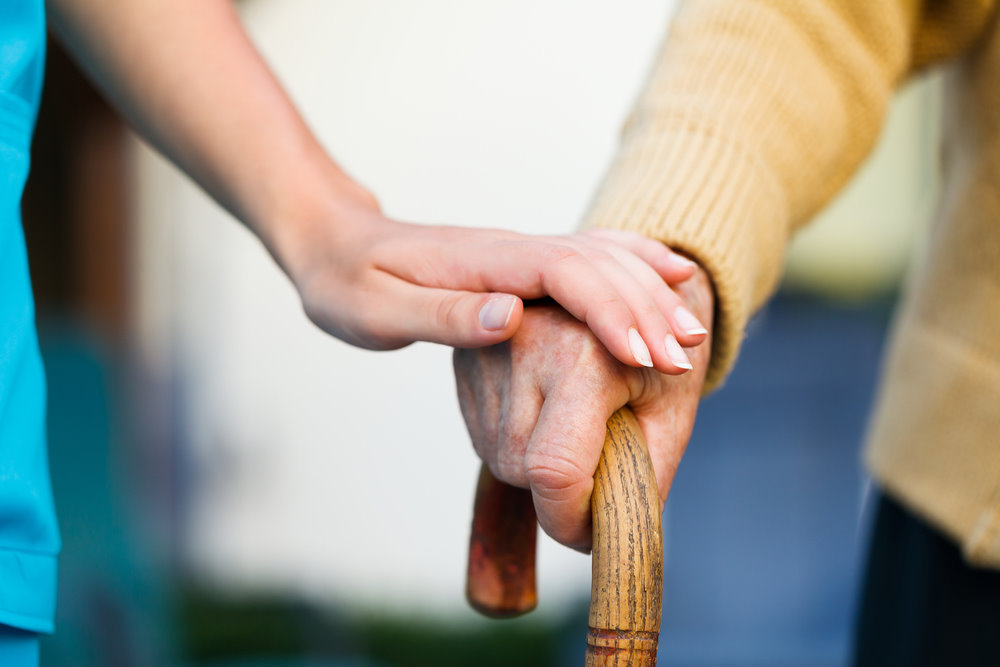A bed-bound patient is usually an elderly who isn’t able to move or do any daily activities on their own. If they aren’t hospitalized, they may opt for external help due to their complex medical history.
Truth be told, most of the patients would rather be at home than in hospital where they run an every-day risk of being dismissed not yet fully recovered, because of the staff or money shortage. For those who can afford extra help, it is much better to know that they have a bed, and not worry when the state will decide they are “too much”- the high cost of hospital stay has never been a bigger issue!
For care providers, on the other hand, it is essential to know how to do it, especially for bed-bound patients. And not only physically, but emotionally as well. The dignity of those patients is really frail and you need to know how to really be there for them.
FOUR-FOLD CARE
Basically, there are four areas in which you as a caregiver need to excel: hygiene, bedsores and their prevention, moving, lifting and handling a person, and creating general comfort with a lot of patience.
Mind you, if any of these sounds overwhelming or your loved one needs professional care, consider hiring a personal assistant for elderly people or a live-in personal assistant, they know exactly how to care for bed-bound seniors’ particular, sensitive needs.
HYGIENE
Bathing- not only does it fight infections, but it also fosters self-worth and adds a “self-care” feeling to the recovery process. It may sound obvious, but it must feel soothing to know you are fresh and clean.
Moreover, it’s not just eliminating microbes and sweat, it’s also sort of a physical exercise for it activates circulation due to the body massage and toning. Make it a daily routine.
That said, there’s not just one type of bathing a bed-bound patient- it depends on a patient and their level of mobility.
Some are done in the bed a patient lies in- like sponge baths, while patients in wheelchairs may have a regular shower with the help of a bench.
You’ll need warm water and a large container, warm towels- one for soaping the other for rinsing, body wash, lamp (to inspect the skin for rashes, sores, swelling), a razor, comb, toothbrush, basin and their clothes, including incontinence panties.
Make sure you lock the door or drop the curtains around bed to allow some privacy. Don’t undress them all at once, for a) they don’t want that exposure and b) they may catch a cold.
When putting on clothes, be careful to dress the painful side first. When taking them off, the stronger side is the first to go.
Always follow the head-to-toe rule, and when it comes to the peri-care (involving the genitals), it’s front-to-back.
Extra tip: while this might be just another daily routine to a carer, it’s way more than that to the patients- it’s critical. Therefore, be mindful and try to perform it with as much dignity as possible.
BEDSORES
Decubitus, known as a bedsore is a pressure ulcer that starts off as a skin inflammation due to longer lying in the same position or improper lifting and turning because of which the skin tears. Lack of circulation leads to the death of the tissue (necrosis).
The most vulnerable patients are those who cannot feel the pressure and are immobile (due to stroke or paralysis).
It’s widespread and lethal at the same time- bacteria enter the blood system, and aside from exuding odor, it may lead to limb amputation or death. The number of people dying from it is growing.
So, how can you prevent these in bed-bound patients?
Extra-padded foam specialty mattress is the key, together with an adequate diet. Check the back zone and buttocks on a regular basis. Change the patient’s position often (every couple of hours), but make sure to use sheets to avoid friction.
Should a bedsore happen, ensure it’s uninfected, and treat it daily- use saline to clean it, change clothes and move the patient often. An infected tissue must be treated surgically. Don’t bathe too much or too often and don’t wipe the skin. Pat it instead and moisturize often.
Extra tip: take photos of the area to track progress or regress.
MOVING, LIFTING AND HANDLING A PERSON
As you’ve seen, this is utterly important in order to preserve the health and comfort of the elderly.
To avoid the risk of hurting yourself or a patient, up the height of the bed. Always bend your knees. Lift smoothly and only to your shoulder height, with stable feet. Also, the more you keep weight to your body, the easier it is on your back.
Furthermore, National Health Service compiled some practical tips- filed under the “Lifting checklist”. It says: “Before attempting to move someone, ask yourself:
- do they need help to move?
- do they require help or supervision?
- have you told them you’re moving them?
- how heavy are they?
- are you healthy and strong enough to move them?
- is there anyone who could help you?
- how long will it take?
- is there enough space around you?
- are there any obstacles in the way?
- are you wearing suitable clothing and shoes – for example, if you’re on a slippery or damp surface?”
For another detailed list on how to move a bed-bound patient, check here.
BED-BOUND YET COMFORTABLE
A lot goes into the formula of a human’s outlook, and a lot is out of the carer’s hands. But what you can control in order to offer an elderly bed-bound patient a comfortable and bearable life is a nice, clean environment and a lot of patience and genuine care.
It’s not just about changing catheters and taking care of oxygen machines, hydrating the patients and feeding them balanced diets.
Let the sunshine in. Declutter the room and air it properly. Listen to them. Read to them. Play some music. Or their favorite film. If appropriate, ask some meaningful questions: What do other people not understand about you? What do you worry about? Have you learned anything about yourself or other people amidst this situation?
On top of everything, understand the patient and their situation, empathize with their lack of movement, don’t get frustrated, it translates easily.
They already have a very hard time, try not to make it harder.
Conclusion
- Being bed-ridden is a predicament.
- Being bed-ridden in a familiar bed is a little better.
- Seniors confined to their beds may require 24/7 care for their basic needs. Make sure it’s quality care since their quality of life depends on it.
- And one more thing: “Never believe that a few caring people can’t change the world. For, indeed, that’s all who ever have.”
AuthorBio: Anne Harris is an HR specialist working for londonlive-incare.com. She eagerly shares her knowledge with her audience on various blogs. When she isn’t writing or attending wellness conferences, she likes to pack her rucksack and ride her day away on her bike or spend time with her friends.









